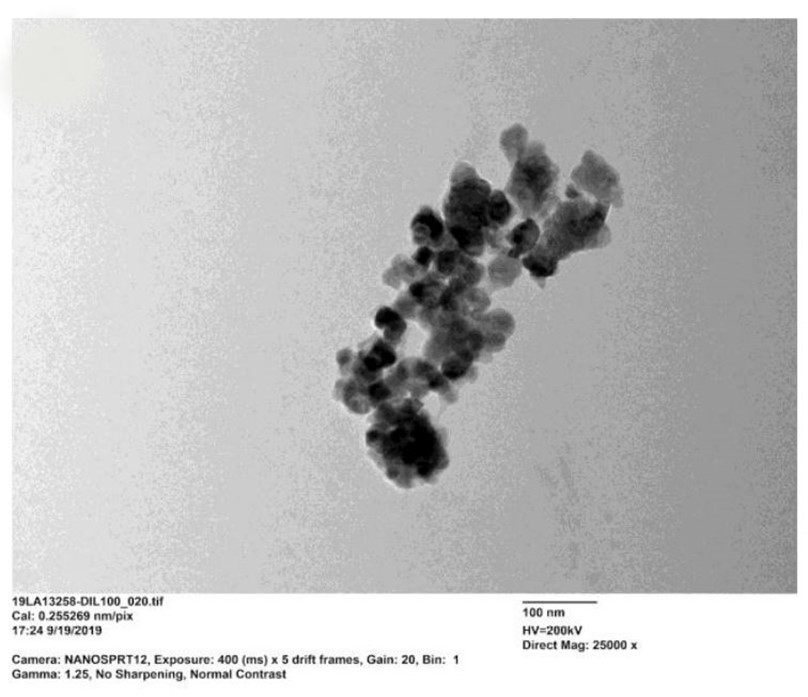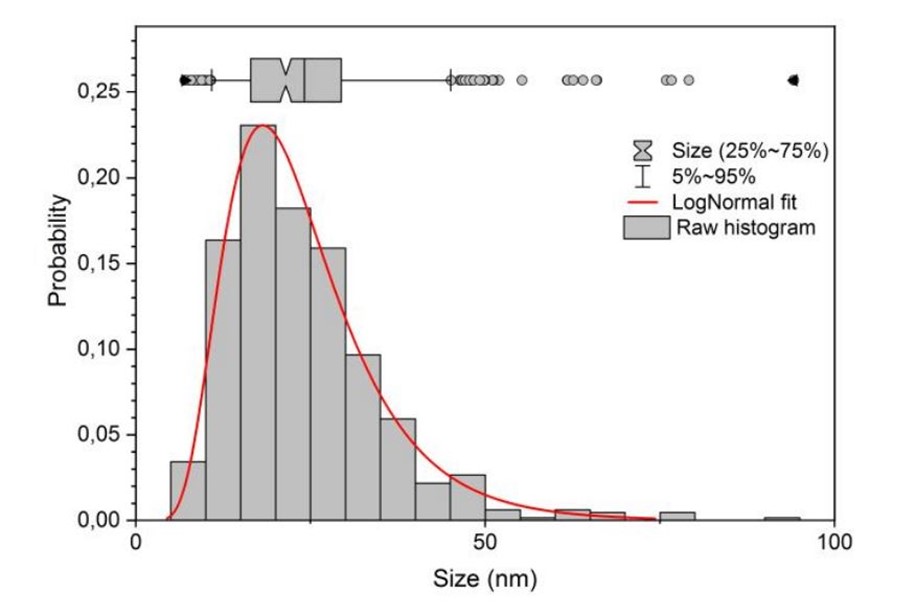Our Zinc Oxide (ZnO) nanoparticles portfolio consist of particles with diameters ranging from 16 to 40 nanometers and find applications in several industries. Among our customers we find personal care products&cosmetics, electronics, coating and tiles industry.

We at Particular Materials synthesize nano ZnO and we produce and supply dispersions with excellent stability, monodispersity and fully disaggregated state.
- To buy ZnO nanoparticles nanopowders and nanodispersions, and for information on pricing, click and request a free quotation now,
- For a Technical Request and for tailor made nanomaterials, don’t hesitate to ask for free support now, click here.
Technical Information
ZnO nanoparticles with sizes below 20 nm display UV absorption behavior without light scattering and they are extensively employed as inorganic UVA and UVB filters. They are also being investigated to kill harmful microorganisms in packaging, with antibacterial and antifungal properties, and in UV-protective materials such as textiles.
ZnO nanostructures have been shown to be prominent photocatalyst candidates to be used in photodegradation owing to the facts that they are low-cost, non-toxic and more efficient in the absorption across a large fraction of the solar spectrum compared to TiO2.
ZnO is a semiconductor with a wide bandgap (3.37 eV) and therefore interacts with UV-light: as well as being an excellent inorganic UV filter it is used as UV photodetector, in field emission displays as well as electrical and optical devices and solar cells.
In order to be able to take advantage of the various properties of Zinc Oxide (ZnO) nanoparticles, significant care needs to be taken in controlling size, monodispersity and crystalline structure.
We at Particular Materials synthesize nano TiO2 and we produce and supply dispersions with excellent stability, monodispersity and fully disaggregated state.
The ZnO nanoparticles are available in two different sizes:
- 16 ± 4 nm
- 40 ± 20 nm

Typical concentration in water are, by weight (w/w%):
- 1%
- 5%
- 10%
- 20%
ZnO can also be provided as nanopowder.
- For specific requirements please send a Technical Support Request
- For a Technical Request and for tailor made nanomaterials, don’t hesitate to ask for free support now, click here.
Related Applications and Industries
One of the primary uses of ZnO nanoparticles is within coatings, to impart unique properties such as UVA and UVB filtration and antimicrobial and antifungal properties. Many coating use zinc oxide particles specifically as a coating agent.
Like other nanomaterials with antimicrobial properties, zinc oxide nanopowders are of value in the production of ceramics, especially those for use in sterile environments, public places, tiles, shopping malls, hospitals and restaurant.
In the cosmetics and personal care industry, many creams, ointments, moisturizers, and beauty products utilize zinc oxide for its antimicrobial and optical properties. ZnO acts as non whitening UVA and UVB filter in sun screens.
Zinc Oxide is used as an electron injecting layer for OLEDs, as an electron-transporting layer (ETL) material, as well as to improve surface and electronic properties of direct and inverted OPVs.
A peculiar characteristic of all nanoparticles is the high surface area to volume ratio, that allows a considerably higher binding capacity and excellent dispersibility of NPs in solutions.
Pricing
Selected nanotechnology research articles
Synthesis, antibacterial activity, antibacterial mechanism and food applications of ZnO nanoparticles: A review. Shi, Lu-E & Li, Zhen-Hua & Zheng, Wei & Zhao, Yi-Fan & Jin, Yong-Fang & Tang, Zhen-Xing. (2013) Part A, Chemistry, analysis, control, exposure & risk assessment.
Solution-Processed Ultraviolet Photodetectors Based on Colloidal ZnO Nanoparticles.
Y. Jin, J. Wang, B. Sun, J. C. Blakesley, and N. C. Greenham Nano Letters 2008 8 (6), 1649-1653.
A review of ZnO nanoparticles as solar photocatalysts: Synthesis, mechanisms and applications. Chin Boon Ong, Law Yong Ng, Abdul Wahab Mohammad; Renewable and Sustainable Energy Reviews, Volume 81, Part 1, 2018, Pages 536-551.
Efficient Hybrid Solar Cells from Zinc Oxide Nanoparticles and a Conjugated Polymer. W. J. E. Beek M. M. Wienk R. A. J. Janssen Advanced Materials Communications Volume16, Issue 12 June, 2004 Pages 1009-1013.
Synthesis and characterization of zinc oxide nanoparticles: application to textiles as UV-absorbers. Becheri, A., Dürr, M., Lo Nostro, P. et al. J Nanopart Res (2008) 10: 679.
A review of ZnO nanoparticles as solar photocatalysts: Synthesis, mechanisms and applications. Volume 81, Part 1, January 2018, Pages 536-551. Chin Boon Ong , Law Yong Ng , Abdul Wahab Mohammad
Novel and efficient synthesis of Ag-ZnO nanoparticles for the sunlight-induced photocatalytic degradation. Yutong Liu, Qiuping Zhang, Ming Xu, et al. Applied Surface Science, Volume 476, 2019, Pages 632-640, ISSN 0169-4332
Properties of Zinc Oxide Nanoparticles and Their Activity Against Microbes. Siddiqi, K.S., ur Rahman, A., Tajuddin et al. Nanoscale Res Lett 13, 141 (2018).
Applications of green synthesized Ag, ZnO and Ag/ZnO nanoparticles for making clinical antimicrobial wound-healing bandages. Mehrdad Khatami, Rajender S. Varma, et al.. Sustainable Chemistry and Pharmacy, Volume 10, 2018, Pages 9-15, ISSN 2352-5541.
In-Vitro cytotoxicity, antibacterial, and UV protection properties of the biosynthesized Zinc oxide nanoparticles for medical textile applications. Amr Fouda, Saad EL-Din Hassan, Salem S. Salem, Tharwat I. Shaheen. Microbial Pathogenesis, Volume 125, 2018, Pages 252-261, ISSN 0882-4010